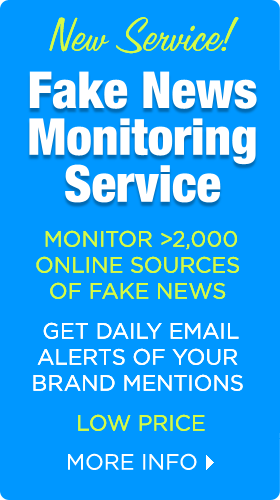 Seeing a competitor in front of television cameras or mentioned in a major print article likely exasperates the company’s PR folks and their C-suite executives too, at least if the interview did not involve a scandal. PR and the executives probably believe the story should have featured your company.
Seeing a competitor in front of television cameras or mentioned in a major print article likely exasperates the company’s PR folks and their C-suite executives too, at least if the interview did not involve a scandal. PR and the executives probably believe the story should have featured your company.
Fortunately, there are effective ways to counteract and gain from your competitor’s positive news coverage. PR experts suggest the following tactics to mitigate the effects of your opponent’s PR win and eventually triumph in the media coverage game.
Monitor. Find your competitor’s media mentions. Using manual searches to identify all the news articles and social media posts that mention your competitors is nearly impossible. An online media monitoring service is an affordable and efficient option for uncovering news stories and social media mentions about other companies in your niche. Experts recommend a service that is easy to customize and integrates monitoring and measurement of print, online news, broadcast, social media and traffic data from the corporate website into a single online dashboard with unified analytics.
Comment. After you locate the competitor’s story, comment on it. Comments secure the attention of the journalist, blogger or video producer who created the story, in addition to the website’s audience. Your comments should add value to the media mention for the audience and the news source – new data, a different perspective, an added insight – and avoid overt promotion. Rather than disagreeing with the competitor’s comments outright, it’s best to agree with something mentioned, and then provide additional useful information. Don’t link directly to your site, advises Matt Walker, CEO of digital marketing firm Main Path Inc. The bio you create to make the comment provides enough information to let people contact you
“While one comment isn’t going to get your phone ringing off the hook, commenting regularly will increase your visibility, contribute to awareness of your brand, and also make the journalists and news staff aware of you,” Walker advises in a MarketingProfs article.
Network with reporters. Find the name and Twitter handle of the individual who produced the story and follow them. Share and retweet their stories to gain the reporter’s attention and appreciation. You can send a direct message to praise the reporter’s articles and offer yourself or your executives as expert sources. Do the same with other journalists who cover your competitors or subject area.
Consider an aggressive response. Volunteer to write a counter-argument to the competitor’s article. To increase chances that the publication will accept the offer, you must outline your company’s perspective and include in your pitch your expert’s background and qualifications. “This can be attractive to the editor as it amounts to additional content that can be linked to, and enriches, the first piece,” advises Matt Wilkinson of Pinnacle Marketing.
“This option was not generally available for print journalism in the trade press where magazines often publish monthly and lead times are long; but the Internet has changed all that,” he said.
Create a similar story that’s better. Develop a similar story with a different angle, well-known subject matter experts, and better visuals. Make it more interesting, more informative, more provocative or more entertaining than the competitor’s piece. Pitch your story to news sources that compete with the one that carried your competitor’s story – and don’t even bother to mention the previous piece.
Analyze them. Study competitors’ other articles that you receive from your media monitoring service. Find angles those stories didn’t cover or additional perspectives or information you can add. PR consultant Debbie Leven recalls in a LinkedIn Pulse post how media monitoring found an article in a specialist publication about handling the media. The article mentioned PR crisis management but didn’t go into detail. That prompted her to contact the editor and offer an article focused specifically on handling crises. The pitch led to a multi-page feature article.
“Let your competitors do the hard work and then jump in on the back of their coverage with an idea for opportunities that will help to put you in the spotlight,” Leven urges.
Measure. One media placement seldom makes a competitor more successful. Even though it may exasperate your executives, the media placement may not really move the needle for the competitor or may not significantly help meet its business objectives. Winning the PR war requires success over the long term with many well-targeted media placements and other inventive PR activities. A comprehensive PR measurement program is essential to demonstrate the long-term success of your PR efforts compared with those of your competitors.
Bottom Line: Seeing competitors featured in newscasts and articles can distress PR pros and corporate executives. That should be a call to action for follow-up PR to neutralize the effect of the competitor’s media coverage. Implementing the suggested counter measures can help assure long-term PR success.
William J. Comcowich founded and served as CEO of CyberAlert LLC, the predecessor of Glean.info. He is currently serving as Interim CEO and member of the Board of Directors. Glean.info provides customized media monitoring, media measurement and analytics solutions across all types of traditional and social media.




